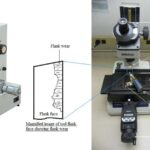Which of the following statements are correct about Chi-Square test?
Which of the following statements are correct about Chi-Square test? (A) The only parameter of a Chi-Square distribution is its number of degrees of freedom. (B) The null hypothesis in given Chi-Square test is rejected when calculated value of variable exceed its critical value. (C) The rejection region in a goodness of fit test lies only in the right tail of the distribution. (D) The Chi-Square test is a parametric test. (E) At α =.05 and V = 1 the critical value of X2 is equal to Z-value at the same level of significance.
Please login to submit an answer.
Here’s an analysis of each statement regarding the Chi-Square test:
(A) The only parameter of a Chi-Square distribution is its number of degrees of freedom.
- Correct. The Chi-Square distribution is defined by its degrees of freedom (df). Unlike other distributions, the Chi-Square distribution does not have parameters such as mean or standard deviation. The degrees of freedom determine the shape of the distribution.
(B) The null hypothesis in a Chi-Square test is rejected when the calculated value of the variable exceeds its critical value.
- Correct. In a Chi-Square test, the null hypothesis is rejected if the calculated Chi-Square statistic exceeds the critical value from the Chi-Square distribution table at a given significance level. This indicates that the observed data significantly deviates from what was expected under the null hypothesis.
(C) The rejection region in a goodness of fit test lies only in the right tail of the distribution.
- Correct. For a Chi-Square test for goodness of fit, the rejection region is located in the right tail of the Chi-Square distribution. This is because the Chi-Square statistic is always positive and any large value suggests a significant deviation from the expected distribution.
(D) The Chi-Square test is a parametric test.
- Incorrect. The Chi-Square test is not considered a parametric test. It is a non-parametric test because it does not assume a specific distribution for the population data; rather, it assesses the goodness of fit or independence based on categorical data.
(E) At α = 0.05 and V = 1, the critical value of χ2chi^2χ2 is equal to the Z-value at the same level of significance.
- Incorrect. The critical value of χ2chi^2χ2 at α=0.05alpha = 0.05α=0.05 and V=1V = 1V=1 (degrees of freedom) is not equal to the Z-value at the same significance level. The Z-value for α=0.05alpha = 0.05α=0.05 (one-tailed) is approximately 1.645, while the Chi-Square critical value for α=0.05alpha = 0.05α=0.05 with 1 degree of freedom is approximately 3.841. The Chi-Square and Z-distributions are different and are used in different types of statistical tests.
In summary, the correct statements are:
- (A) The only parameter of a Chi-Square distribution is its number of degrees of freedom.
- (B) The null hypothesis in a Chi-Square test is rejected when the calculated value of the variable exceeds its critical value.
- (C) The rejection region in a goodness of fit test lies only in the right tail of the distribution.
- Share on Facebook
- Share on Twitter
- Share on LinkedIn
Helpful: 0%




